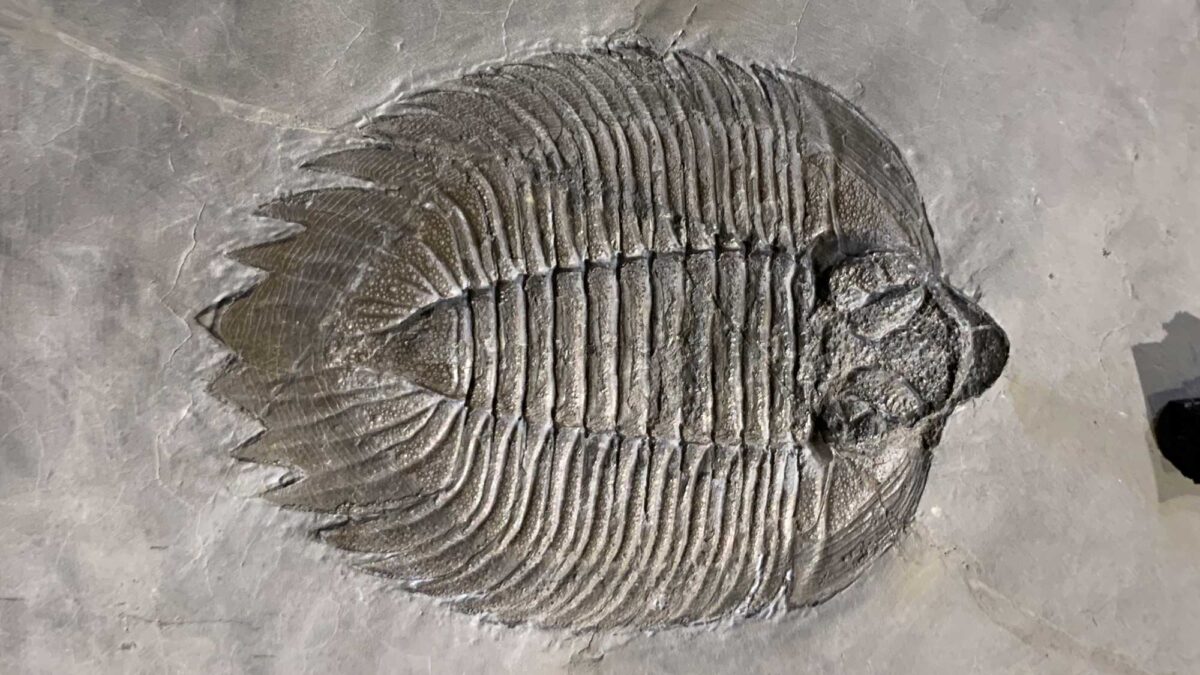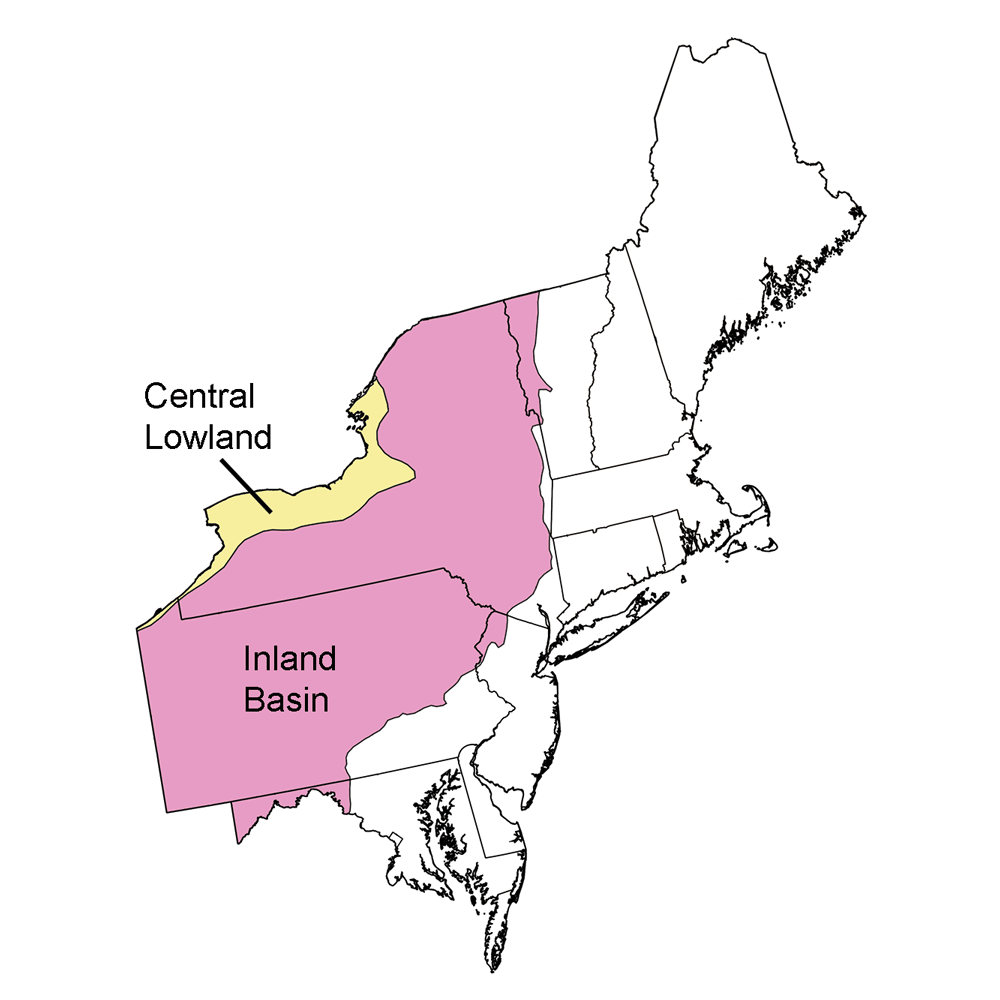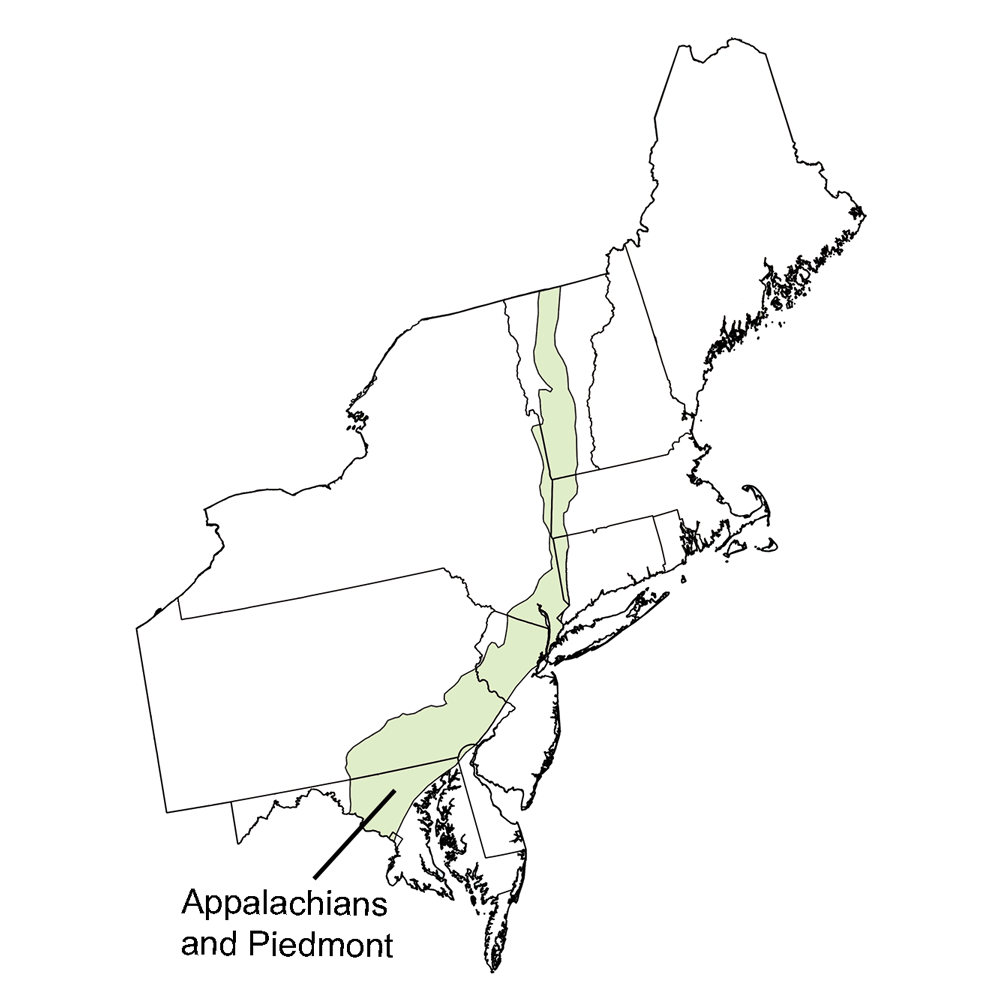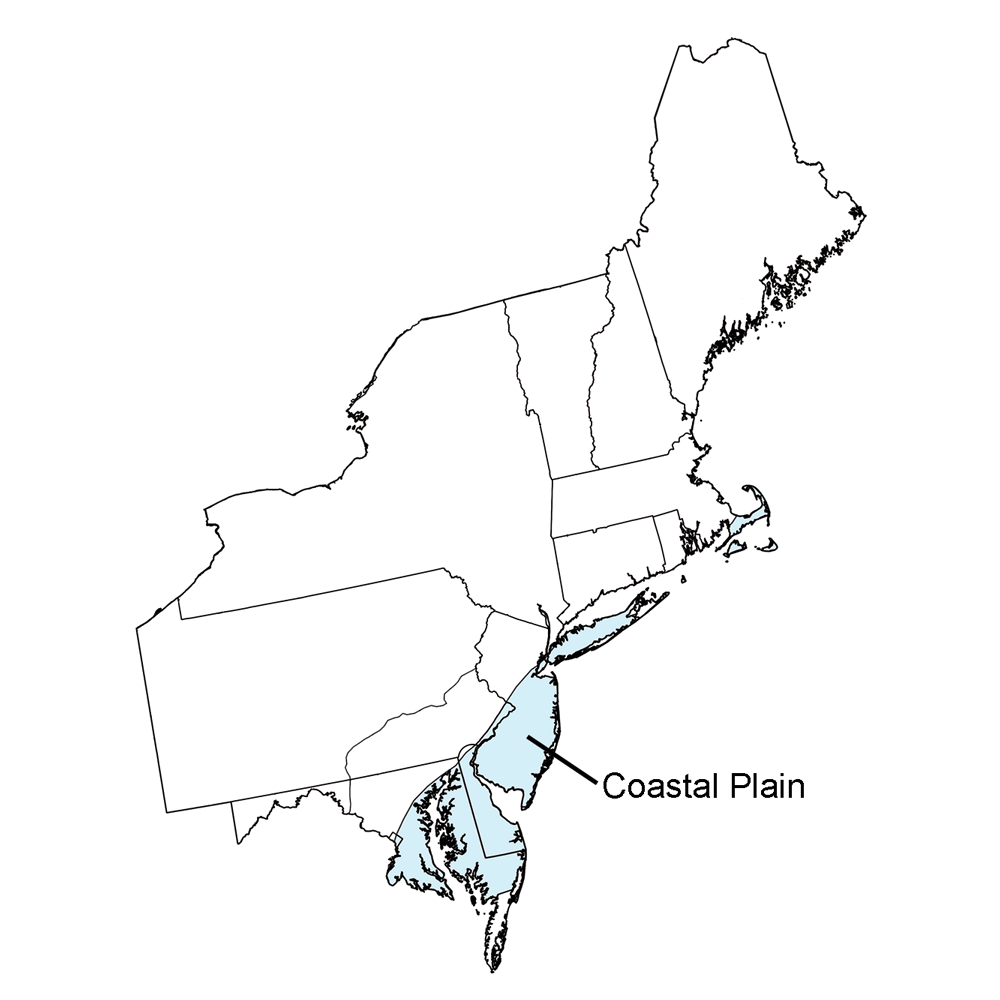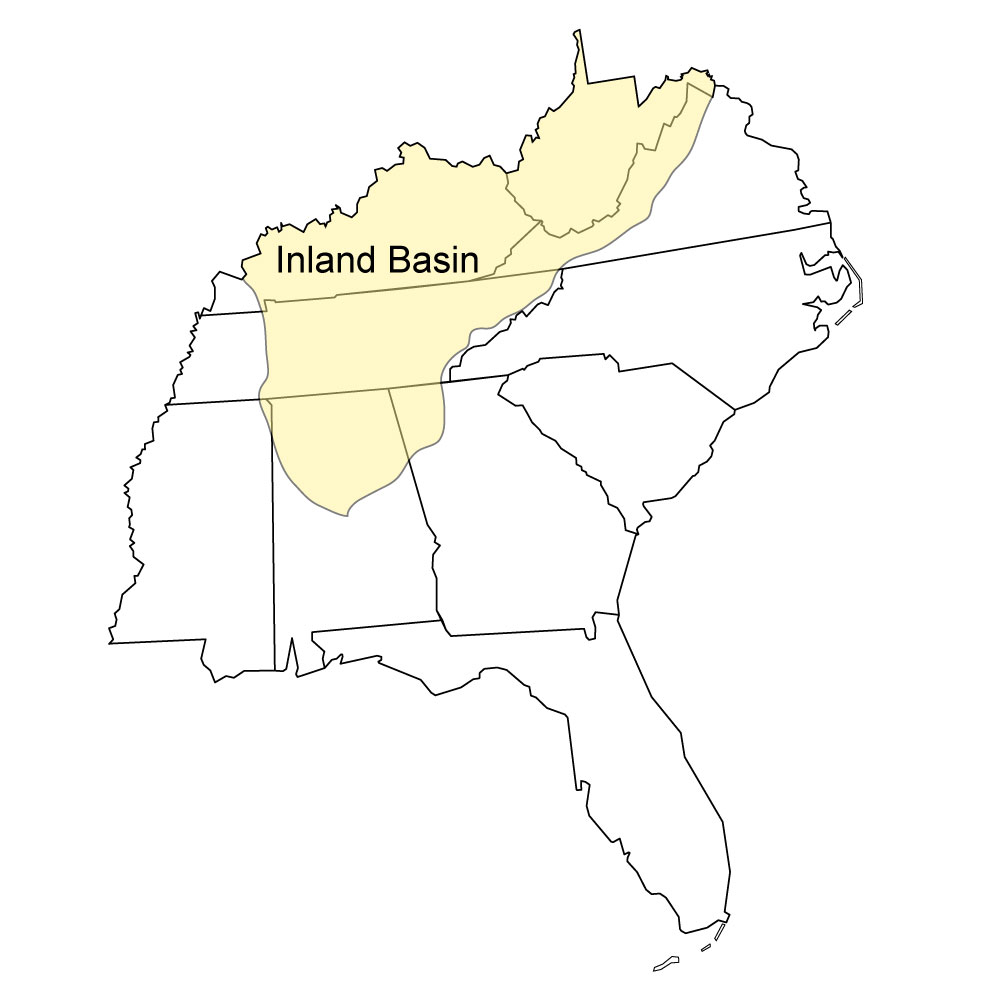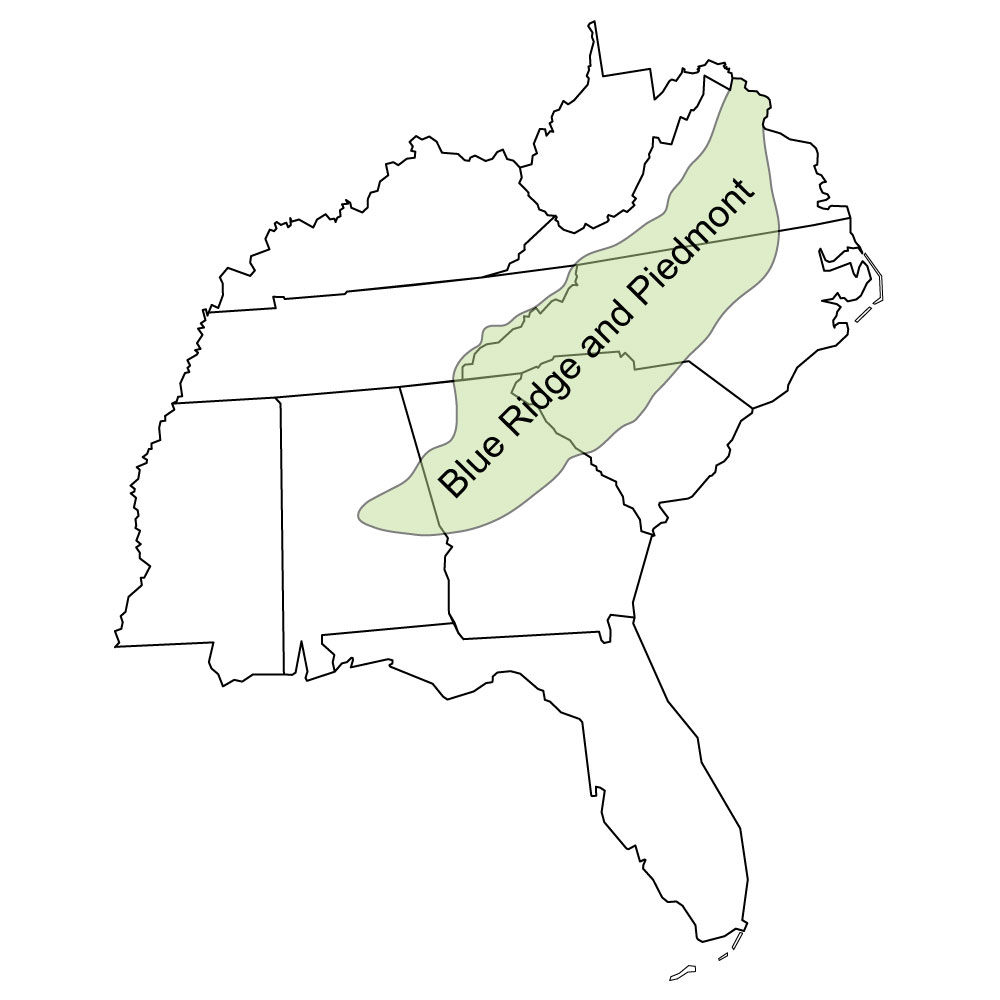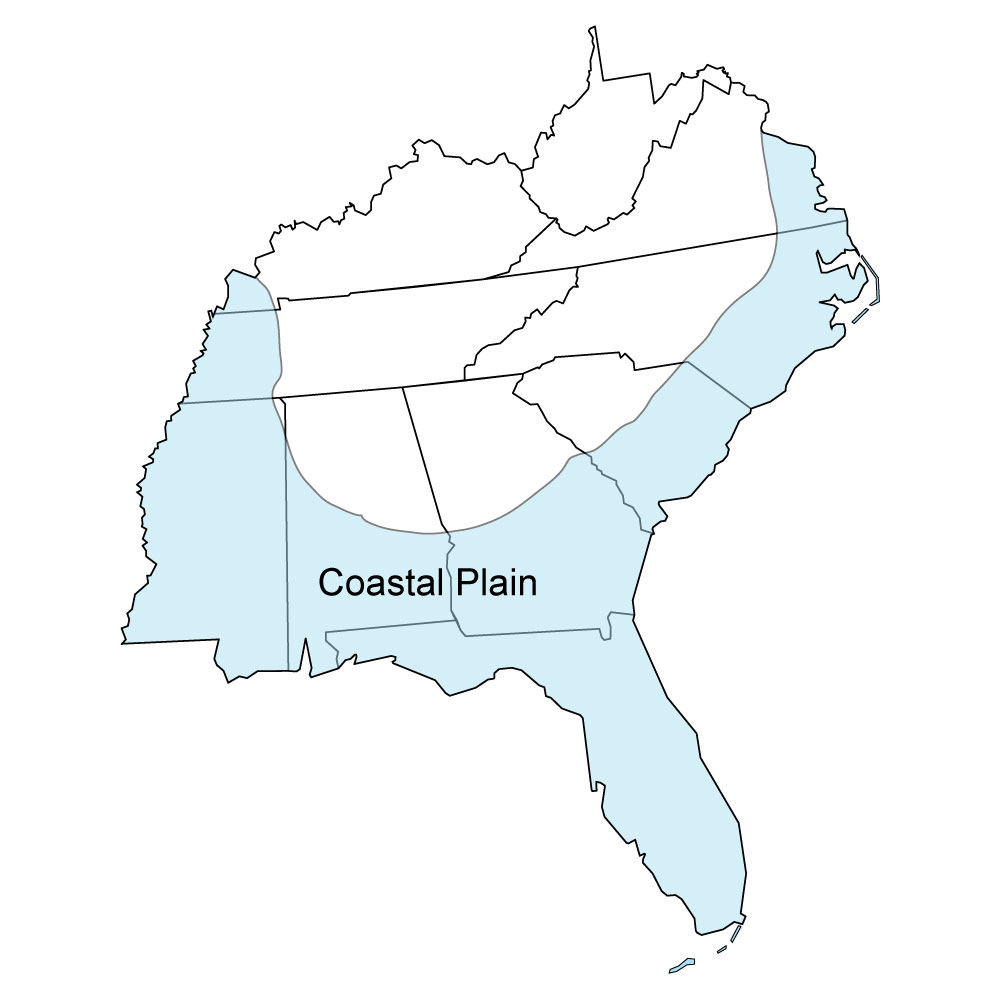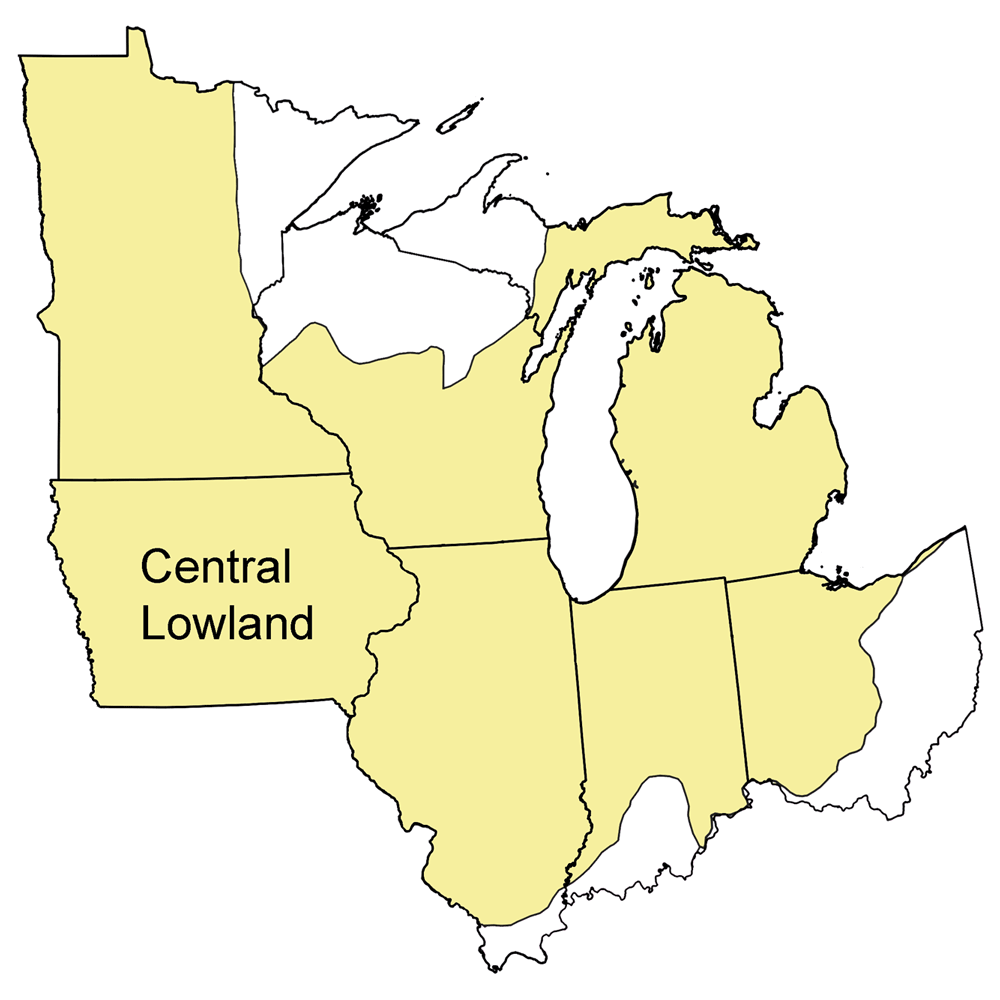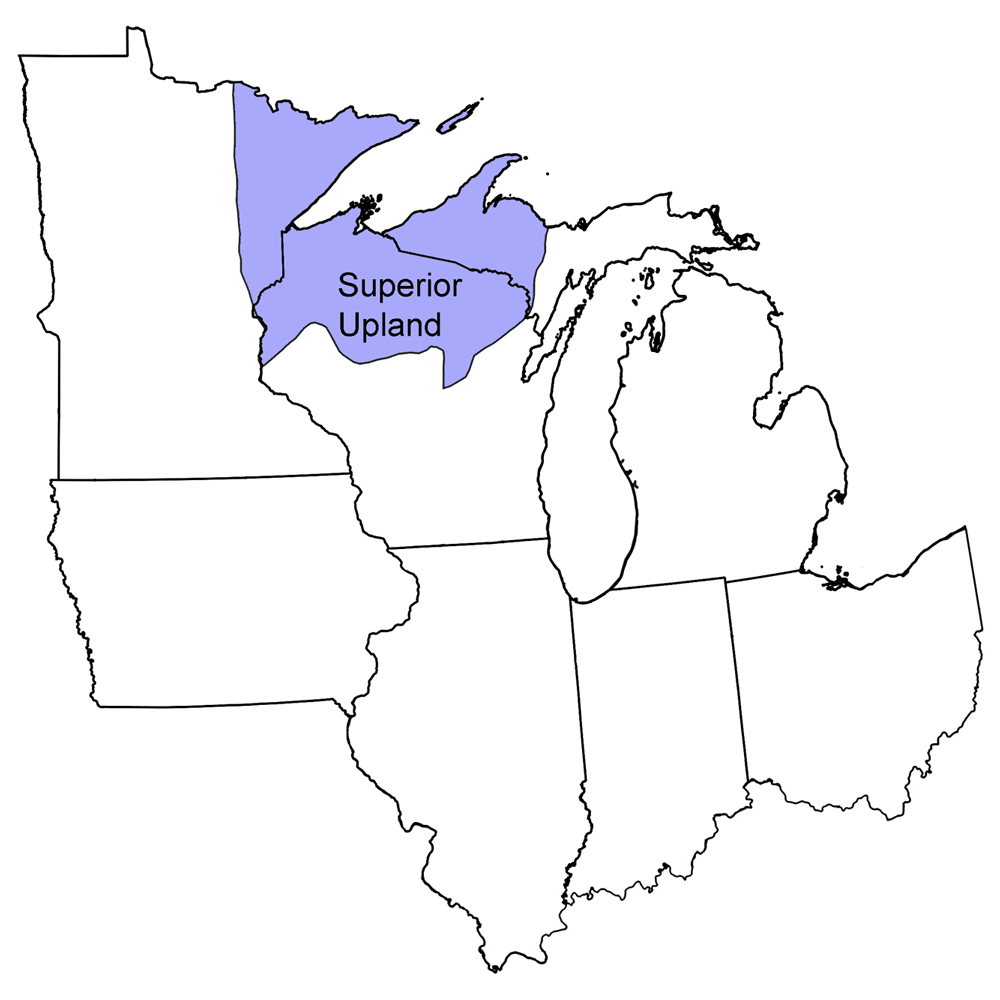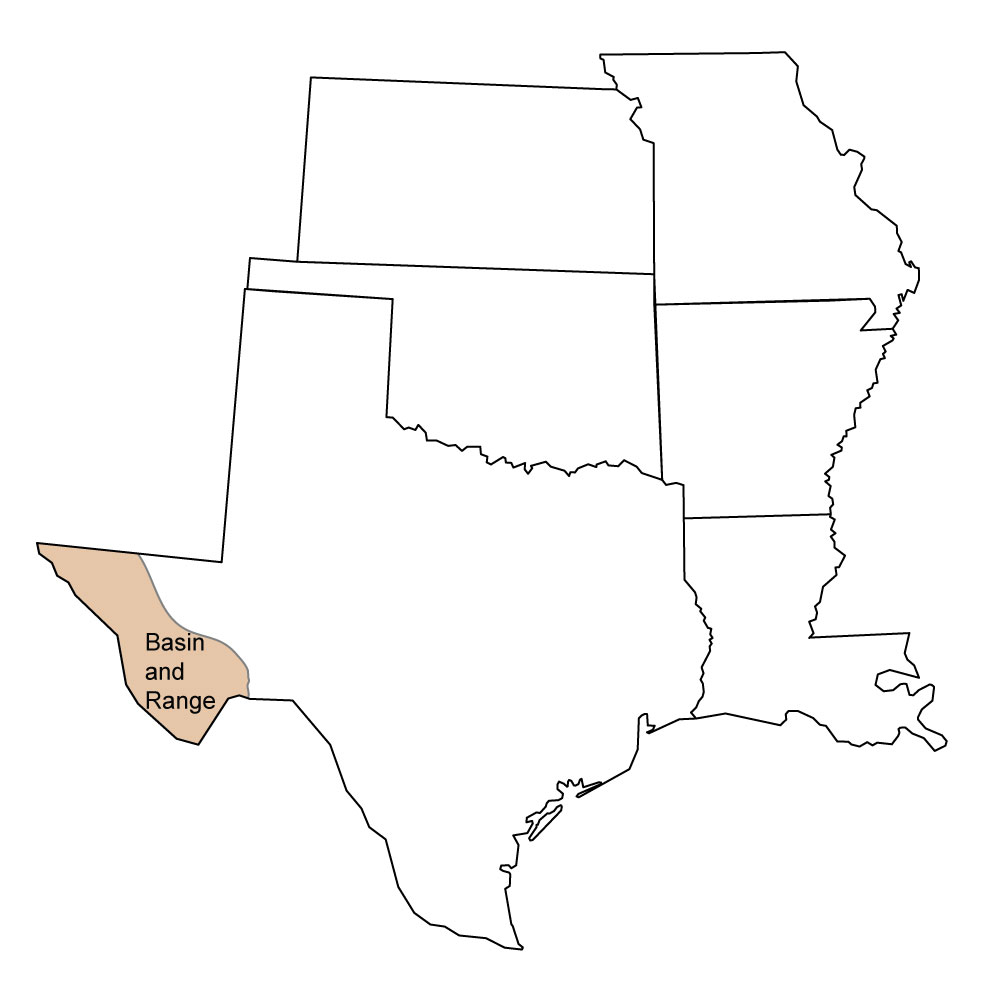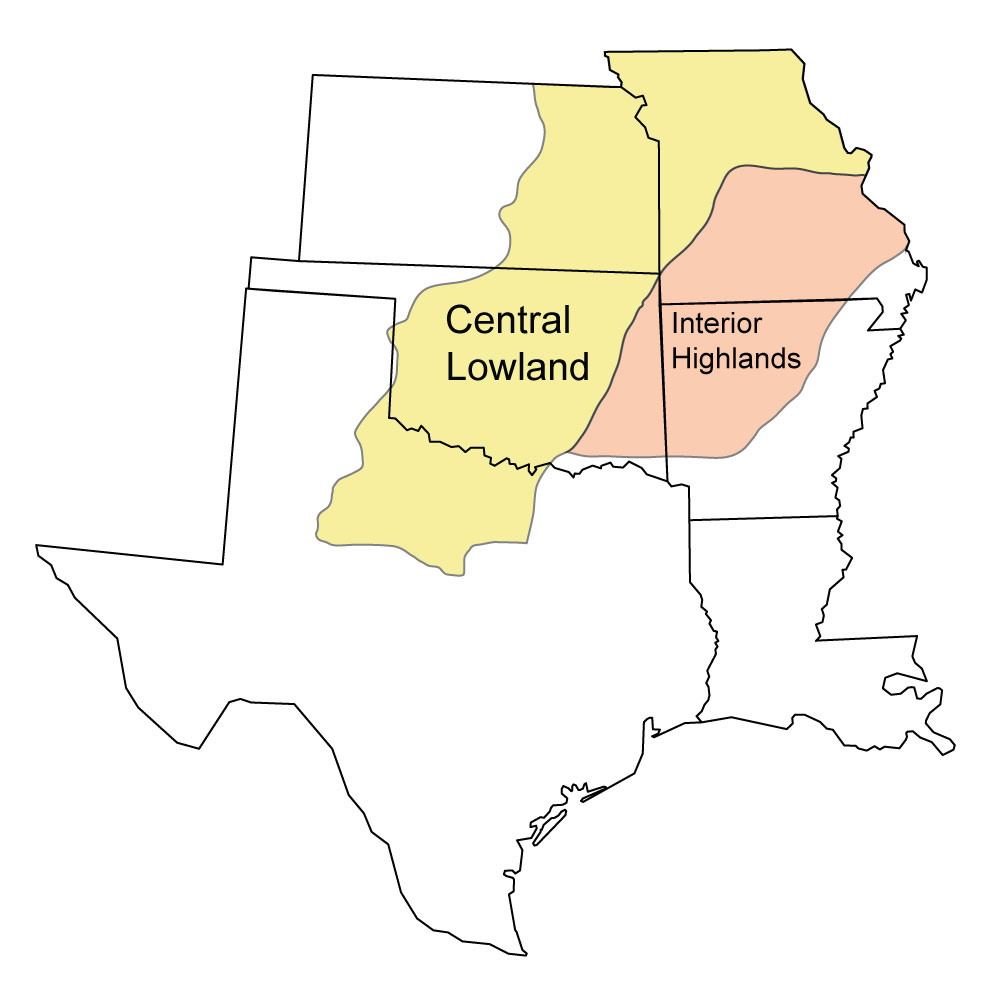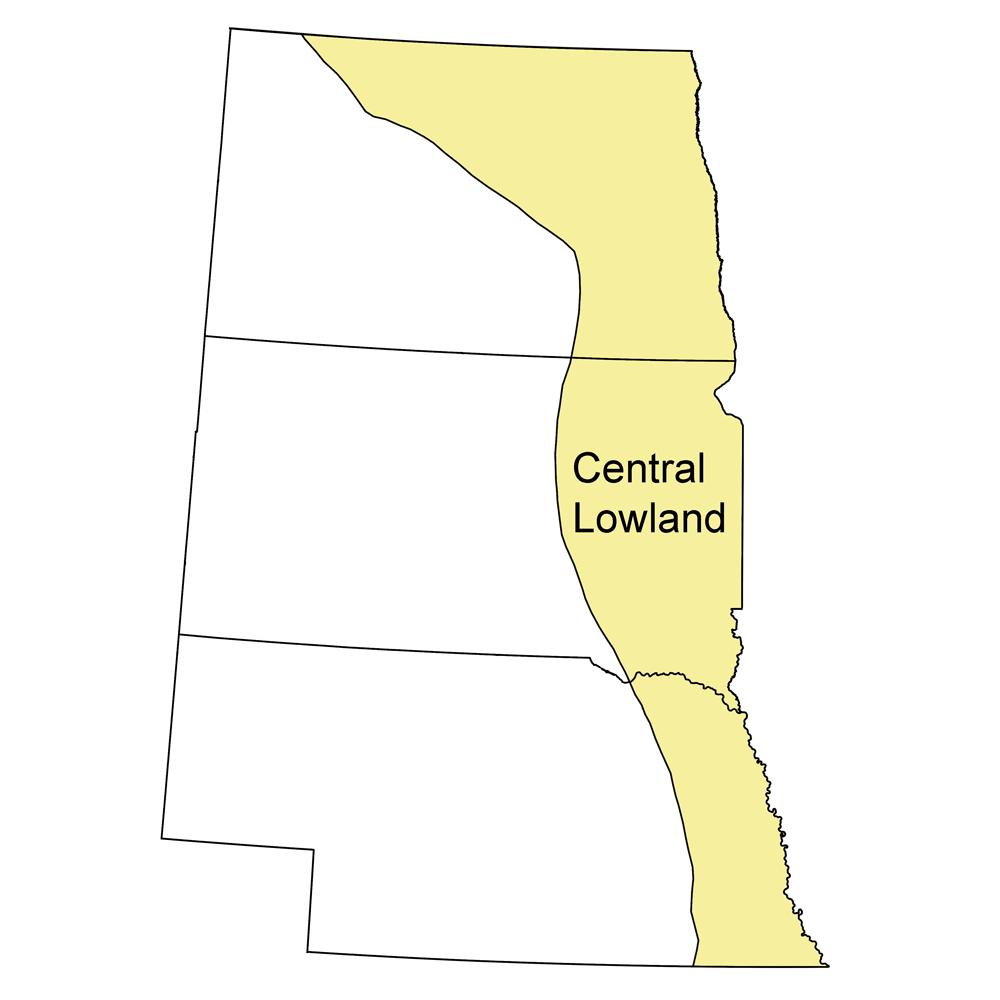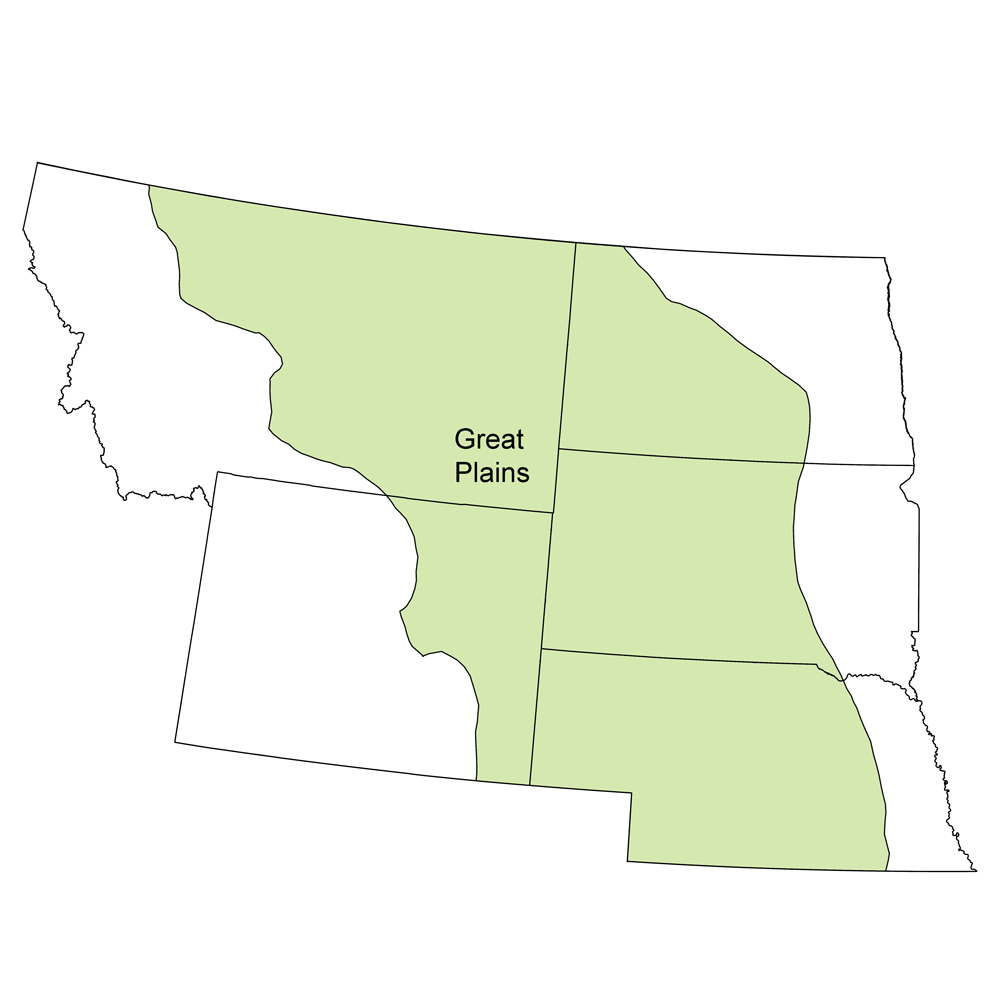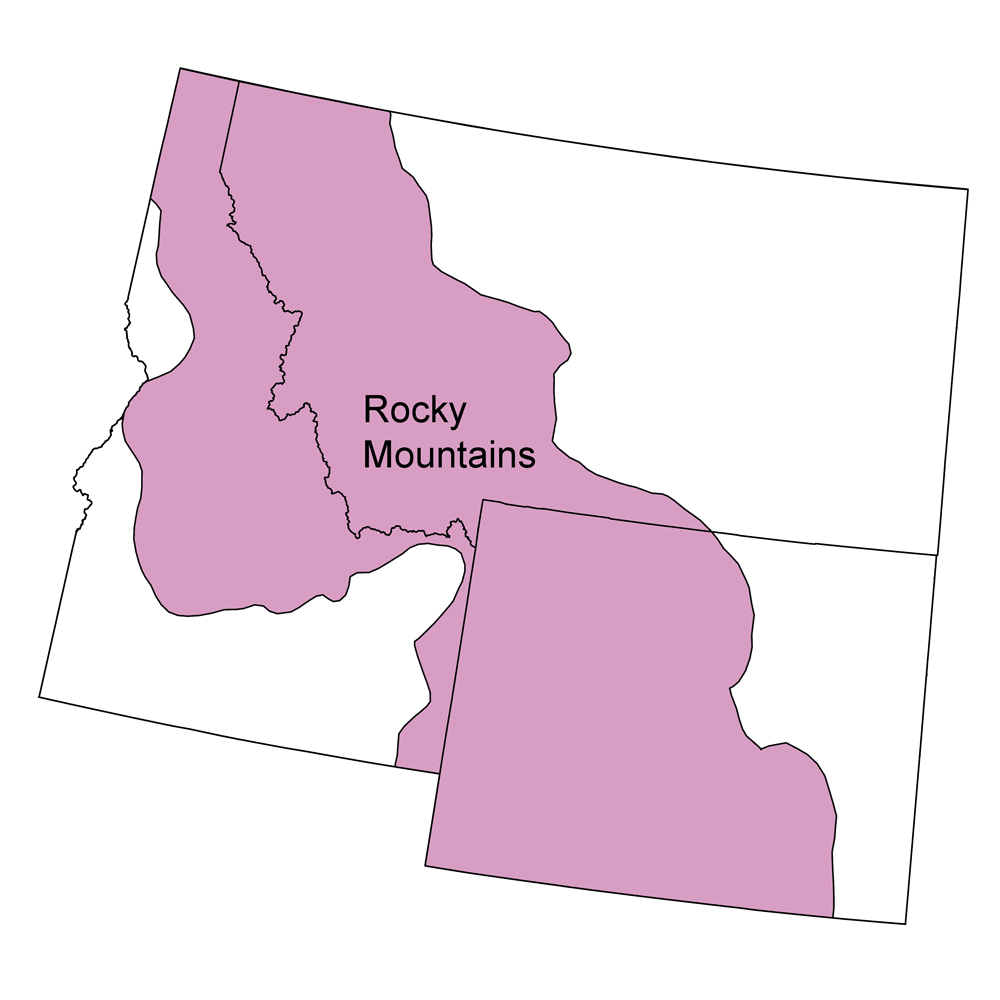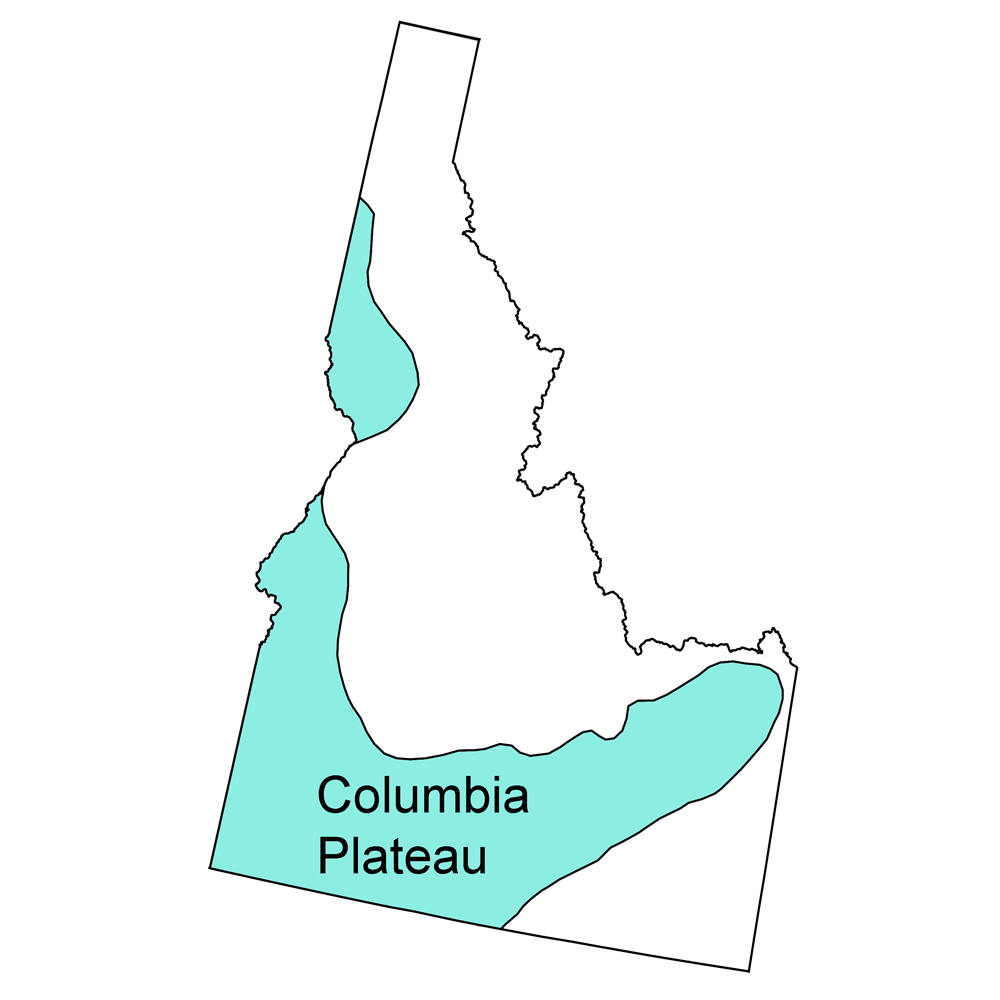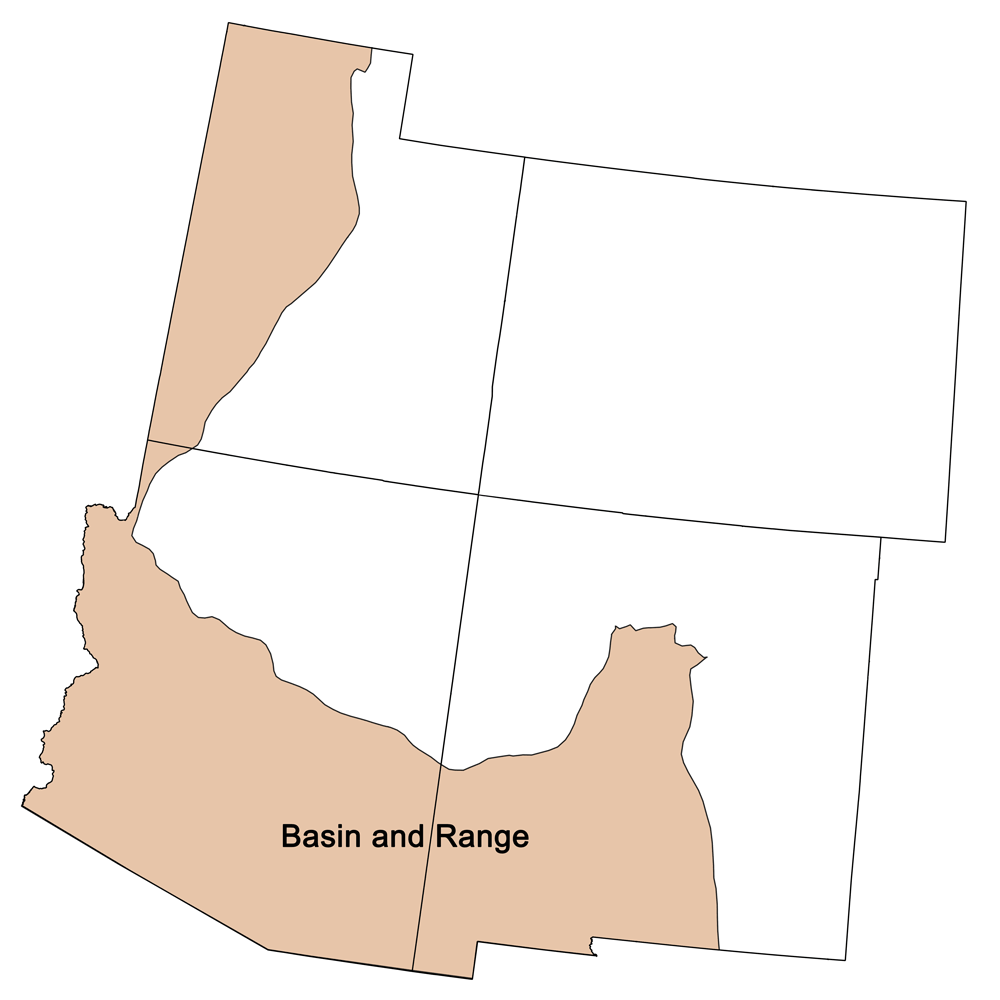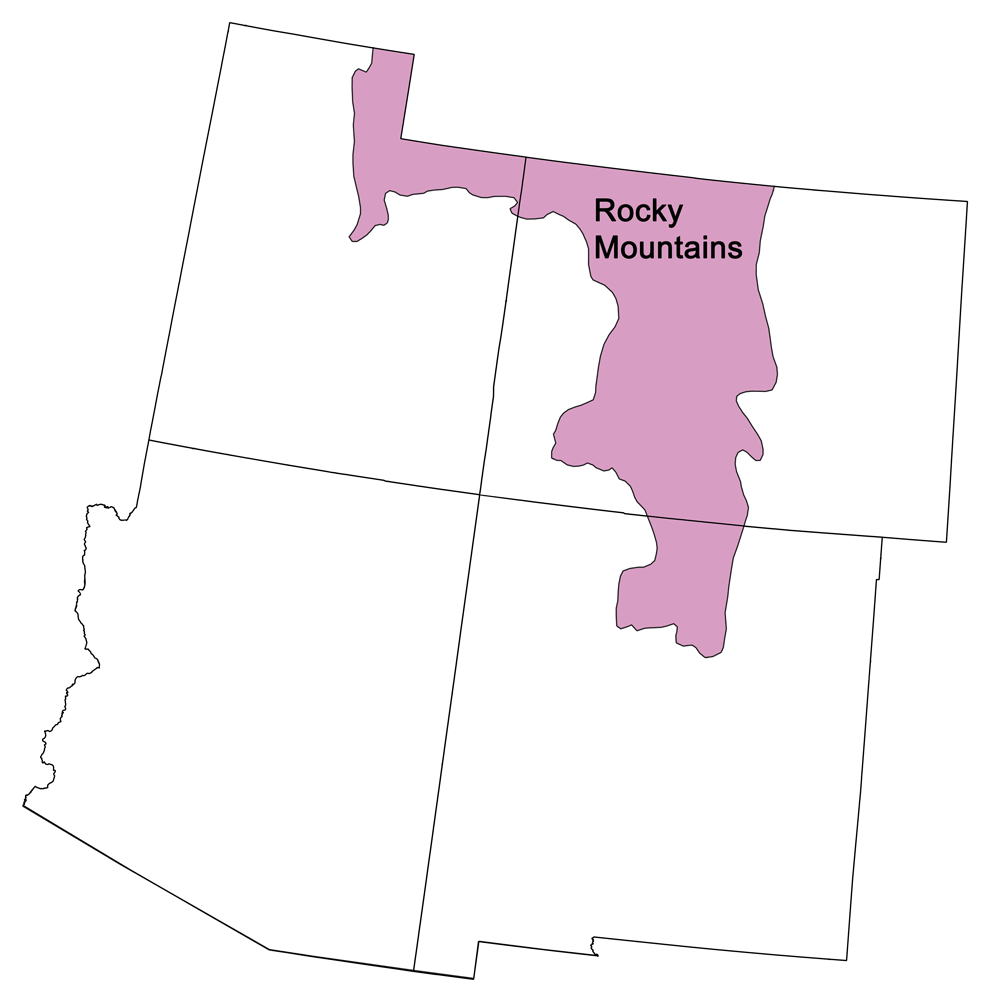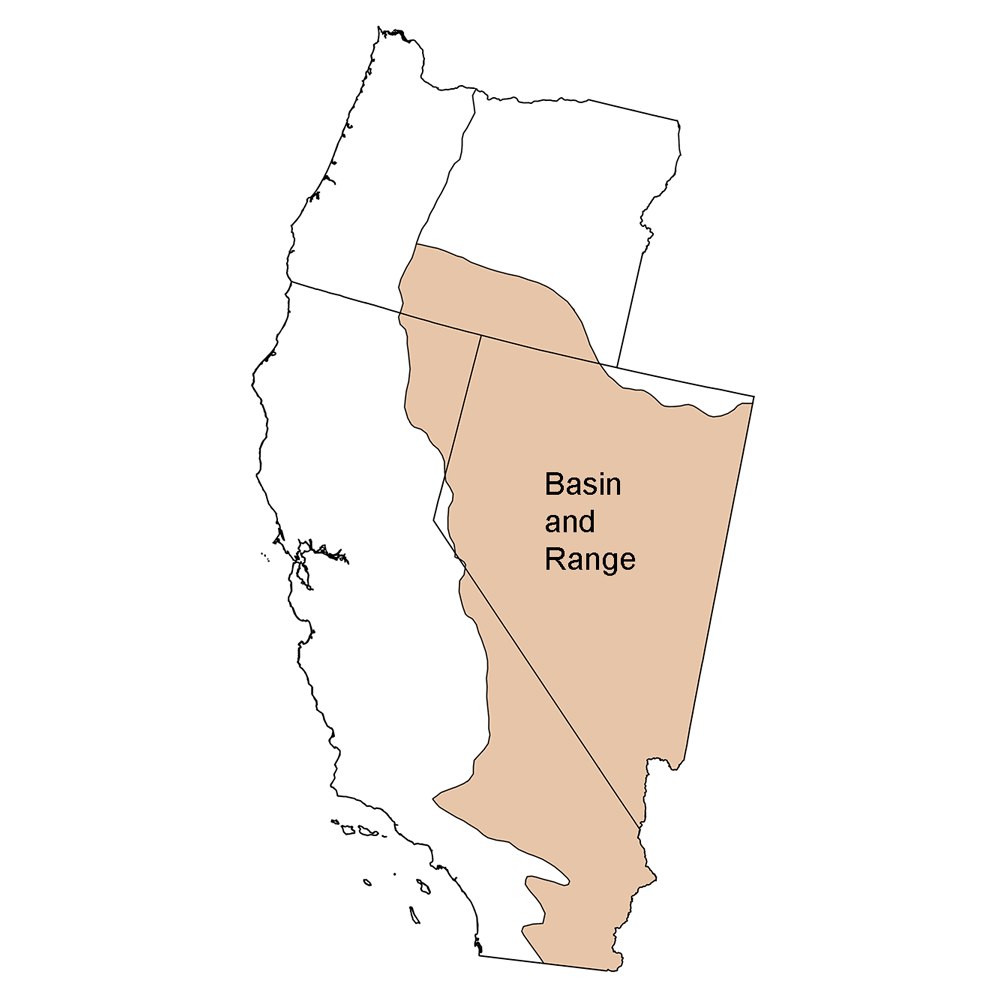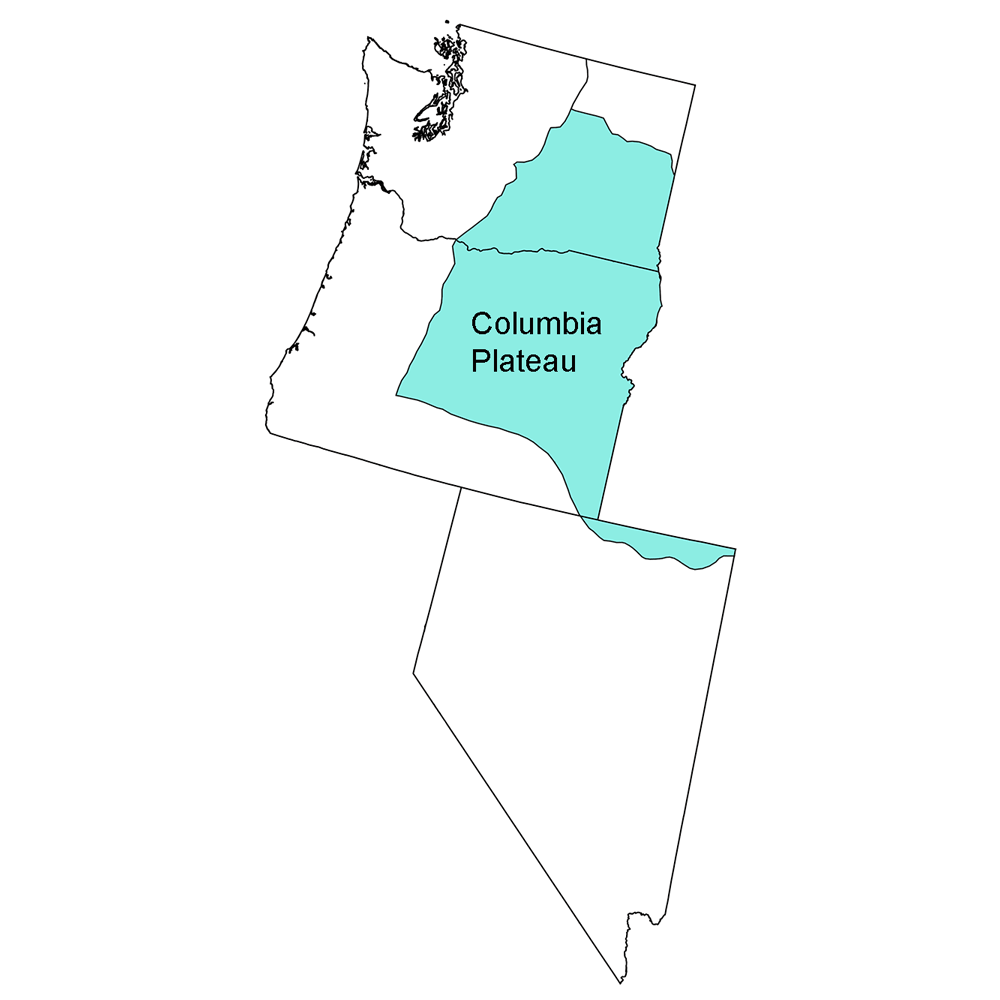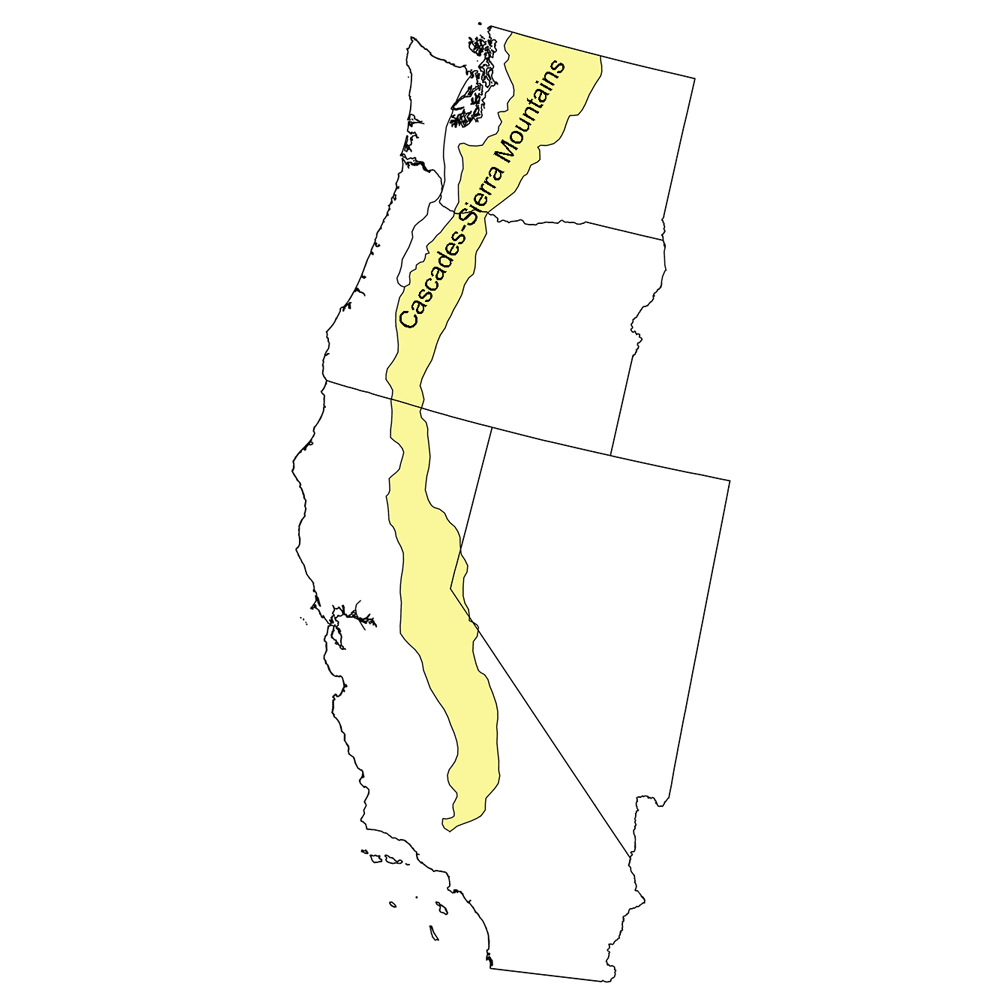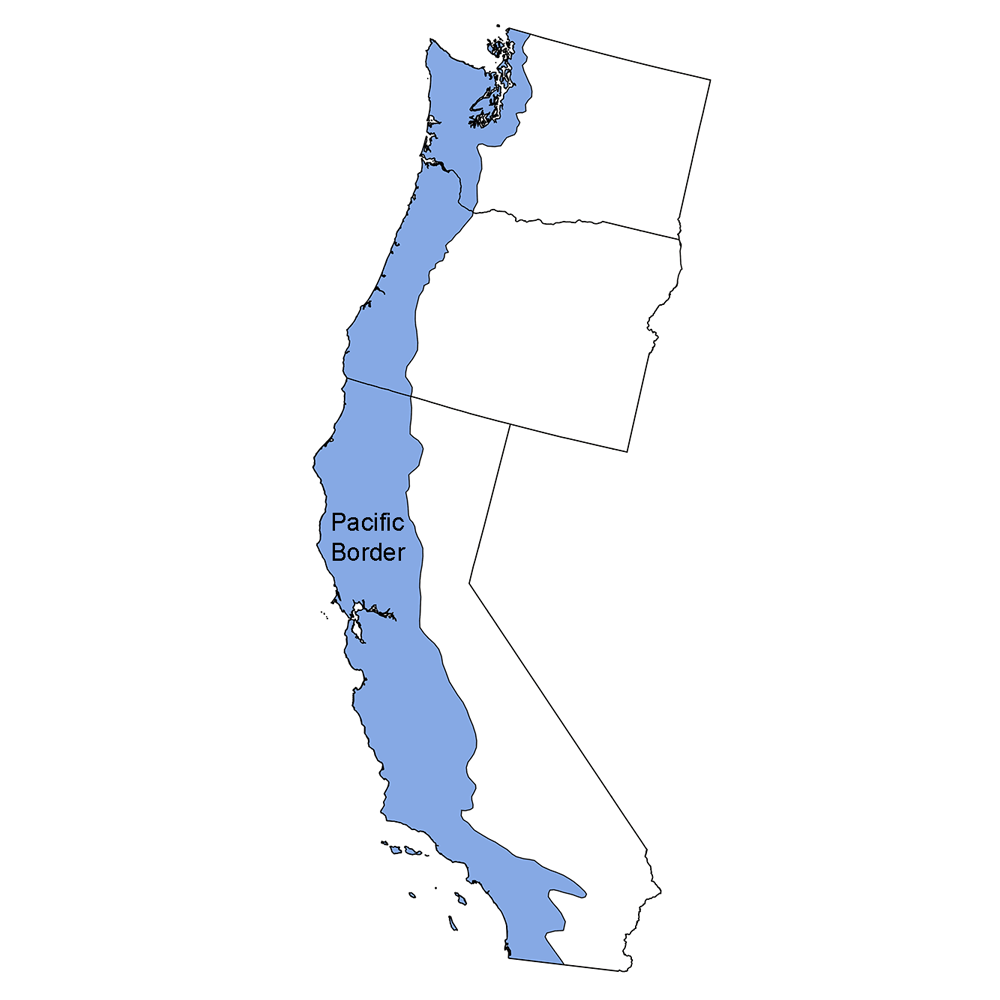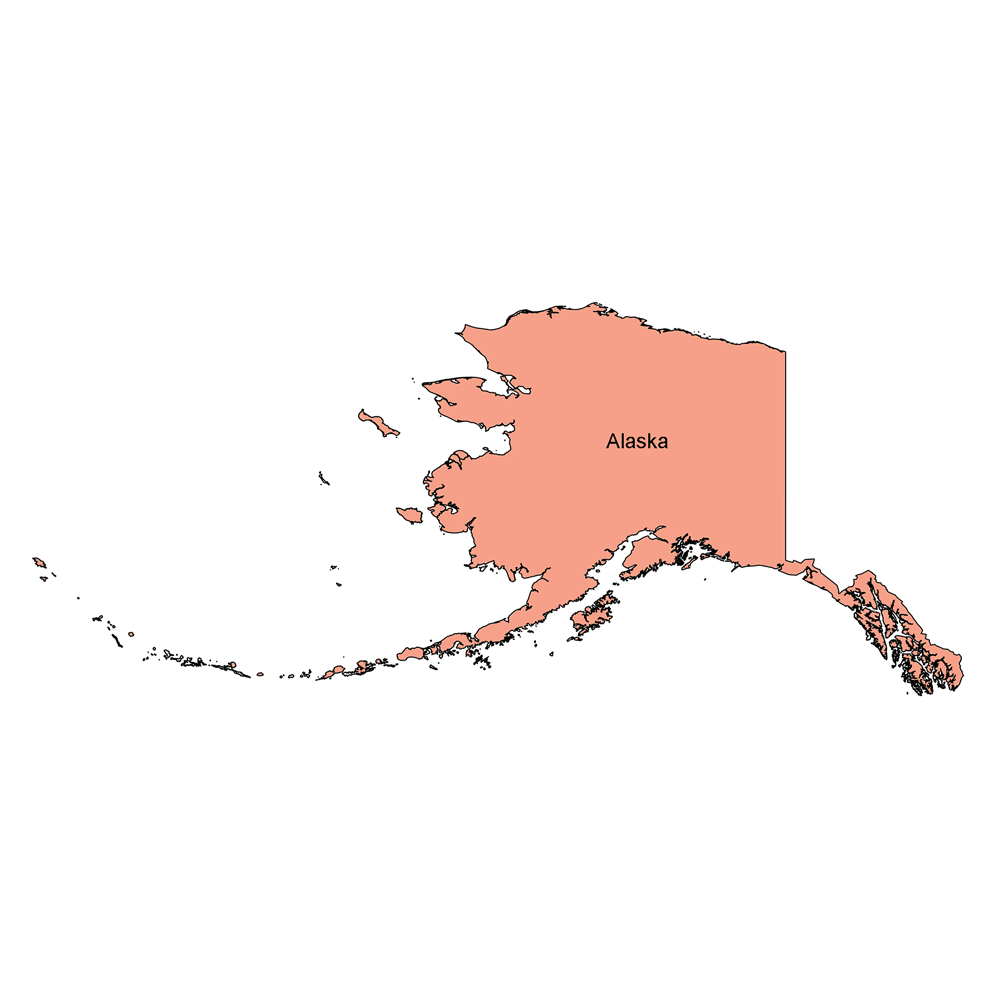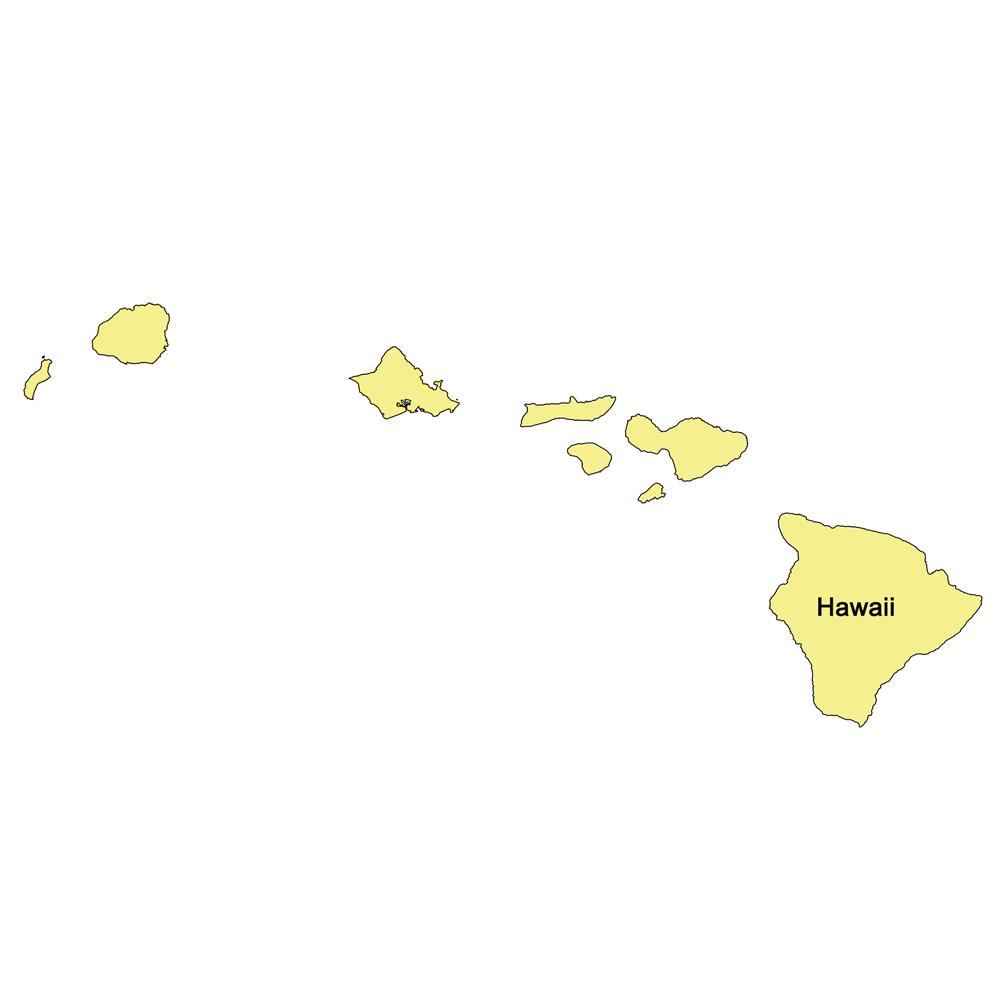What used to live here?
From trilobites to dinosaurs, the United States has an incredibly rich fossil record that tells the story of how ancient animals and plants evolved, lived, and went extinct.
Click on the maps below to find out more about the fossils that have been found near where you live or places that you have visited. These are divided by physiographic province (regions unified by their topography and geologic history). More regions will be added in the near future, so check back again soon!

Major physiographic regions of the United States.
Fossils of the Northeastern United States
Explore the fossil record of New York, Pennsylvania, Maryland, Delaware, NewJersey, Connecticut, Rhode Island, Massachusetts, Vermont, New Hampshire, and Maine.

Fossil eurypterid (sea scorpion) Eurypterus remipes.
Fossils of the Southeastern United States
Explore the fossil record of West Virginia, Kentucky, Virginia, Tennessee, North Carolina, South Carolina, Georgia, Alabama, Mississippi, and Florida.
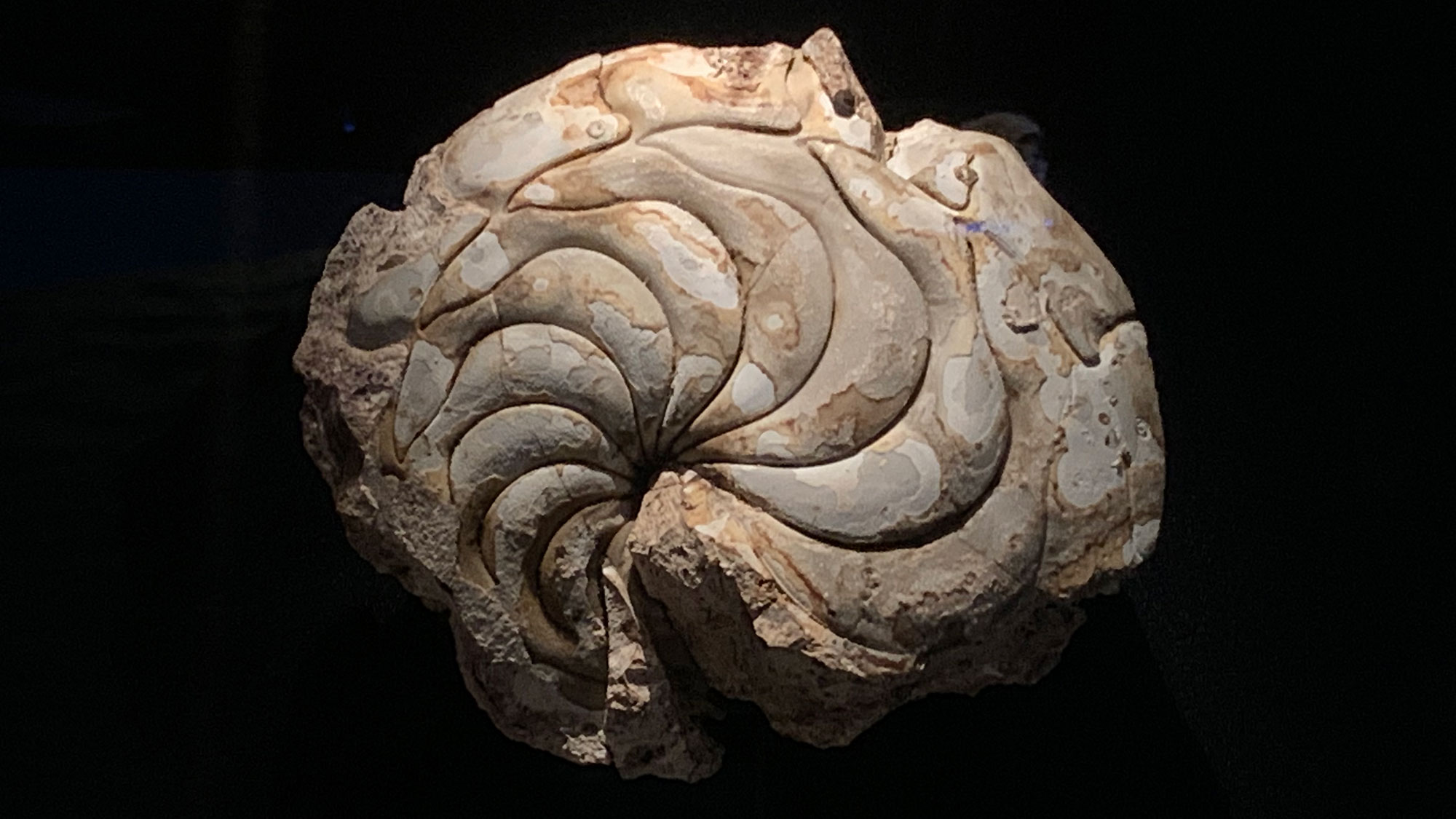
Internal mold of the nautiloid Aturia alabamensis (Eocene, Florida) on display at the Florida Museum of Natural History (UF 418).
Fossils of the Midwestern United States
Explore the fossil record of Illinois, Indiana, Iowa, Michigan, Minnesota, Ohio, and Wisconsin.

A large trilobite (Isotelus maximus), Ordovician Waynesville Formation, Adams County, Ohio. Photo by James St. John (flickr, Creative Commons 2.0 Generic license, image cropped, resized, rotated).
Fossils of the South-Central United States
Explore the fossil record of Kansas, Missouri, Oklahoma, Arkansas, Louisiana, and Texas.
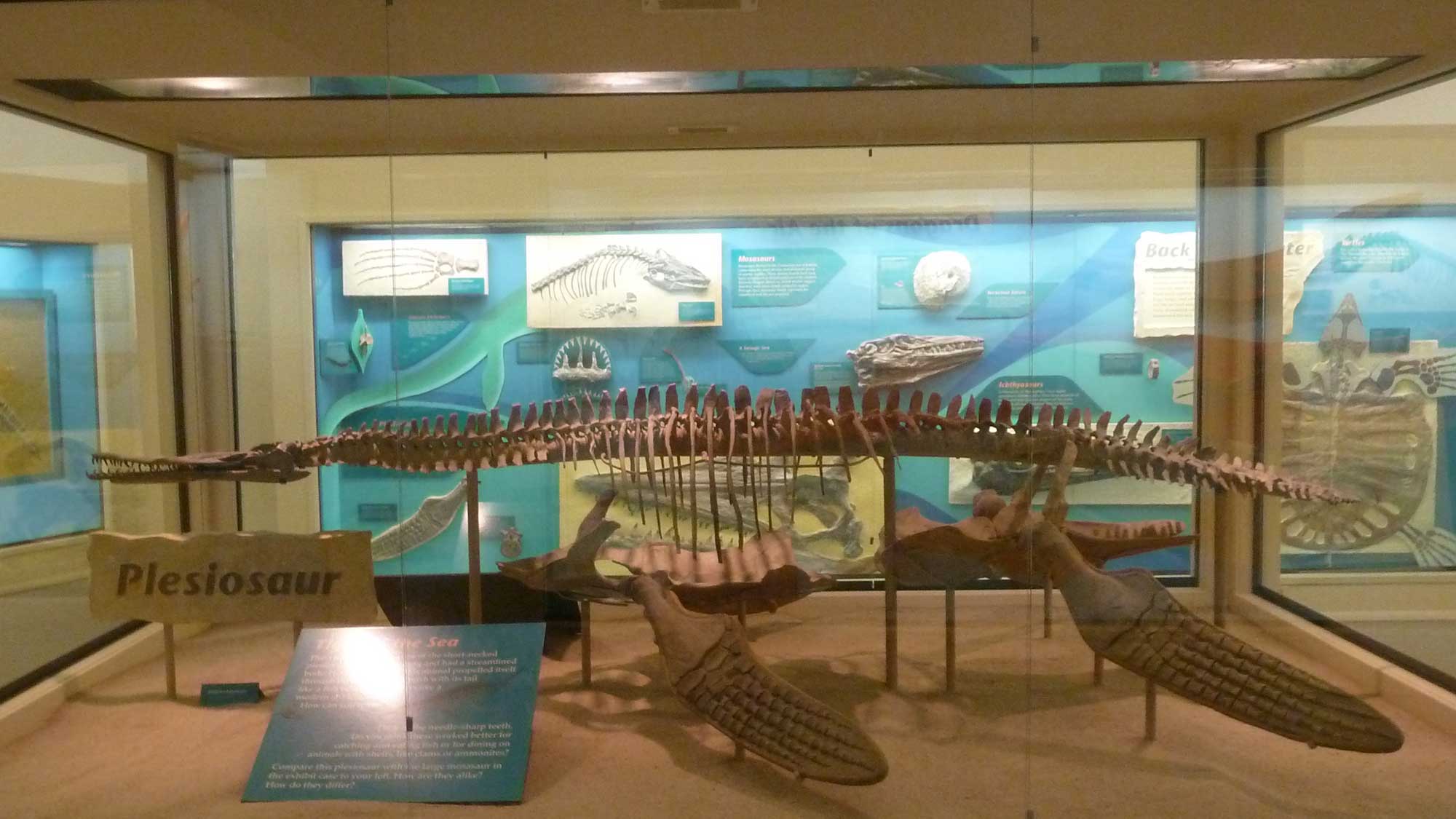
The short-necked plesiosaur Dolichorhynchops osborni from the Cretaceous Smoky Hill Chalk of Logan County, Kansas. Specimen on display at the Sternberg Museum of Natural History, Ft. Hays, Kansas.
Fossils of the Northwest-Central United States
Explore the fossil record of Idaho, Montana, Nebraska, North Dakota, South Dakota, and Wyoming.
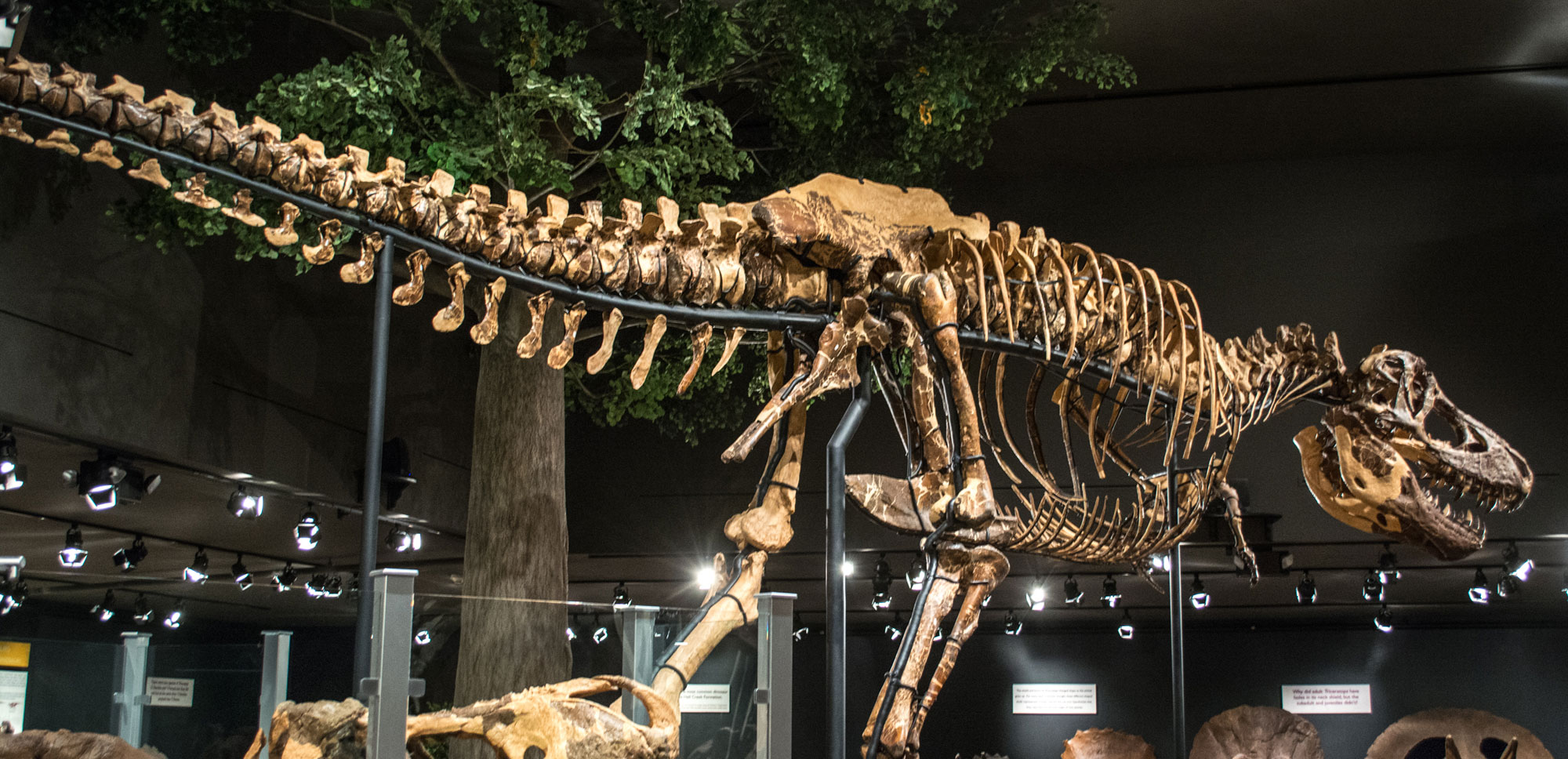
Montana'sT. rex on display at the Museum of the Rockies in Bozeman, Montana. Photo by Tim Evanson (flickr, Creative Commons Attribution-ShareAlike 2.0 Generic license, image cropped and resized).
Fossils of the Southwestern United States
Explore the fossil record of Colorado, New Mexico, Arizona, and Utah.
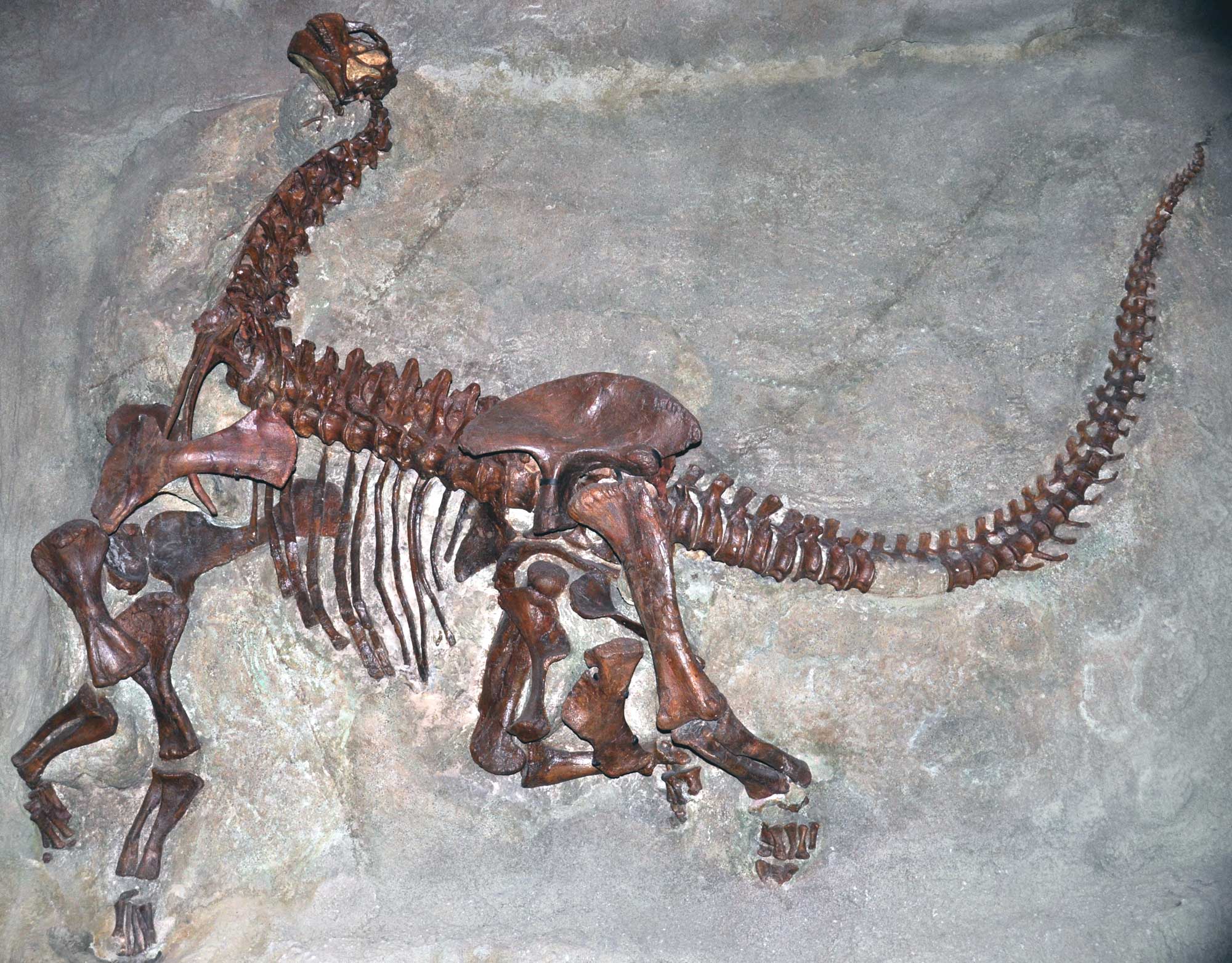
Skeleton of a juvenile Camarosaurs lentus, a type of sauropod, from the Carnegie Quarry, Jurassic Morrison Formation, Dinosaur National Monument, Utah and Colorado. Photo by James St. John (flickr, Creative Commons Attribution 2.0 Generic license, image cropped and resized).
Fossils of the Western United States, including Hawaiʻi
Explore the fossil record of California, Nevada, Oregon, Washington, Alaska, and Hawaiʻi.
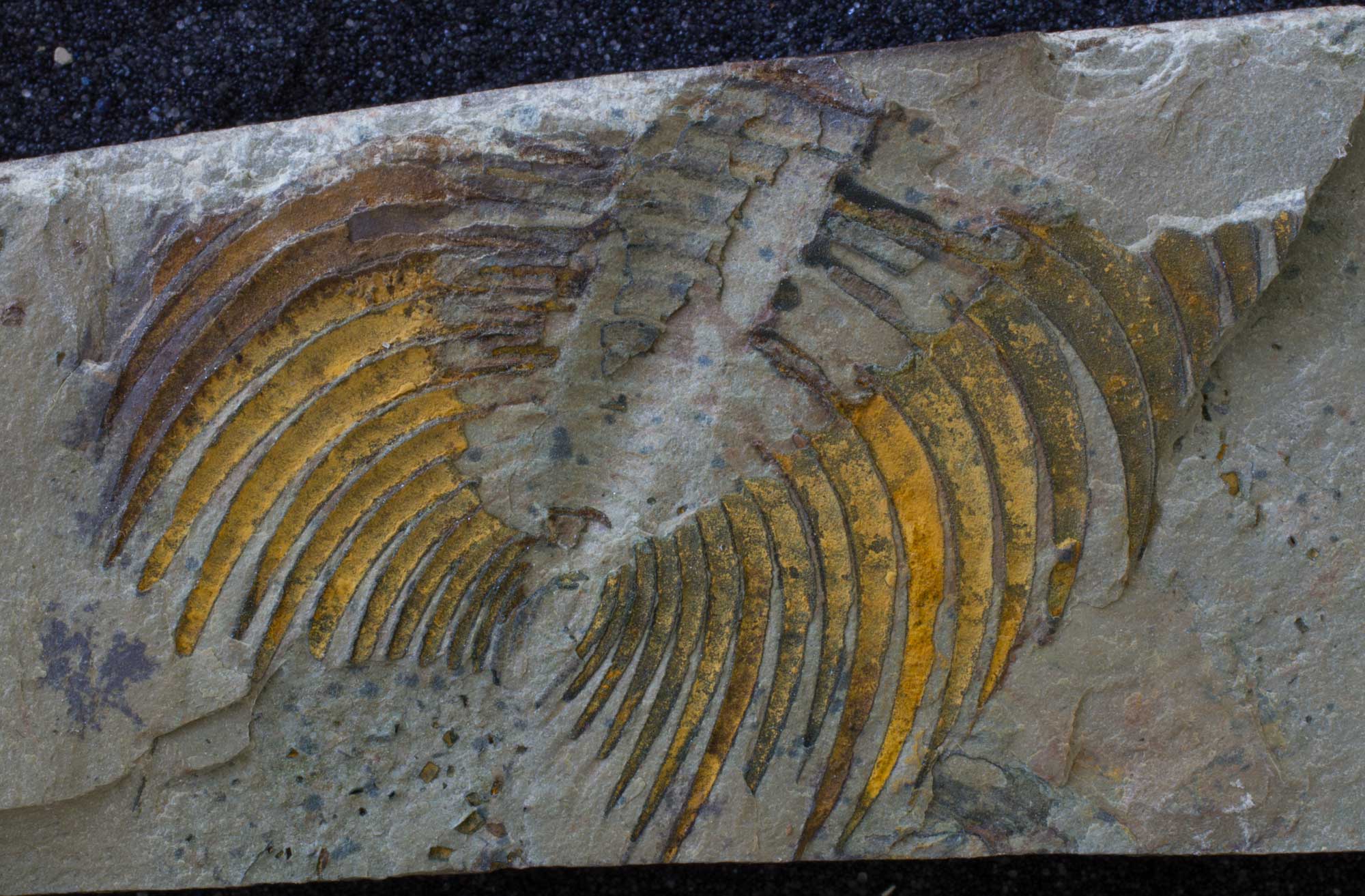
A trilobite (Nevadia parvoconica), Indian Springs Lagerstätte, Early Cambrian Poleta Formation, Esmeralda County, Nevada. Photo by Paleontological Research Institution (PRI) on GBIF.org (CC0 1.0 Universal/Public Domain Dedication).



